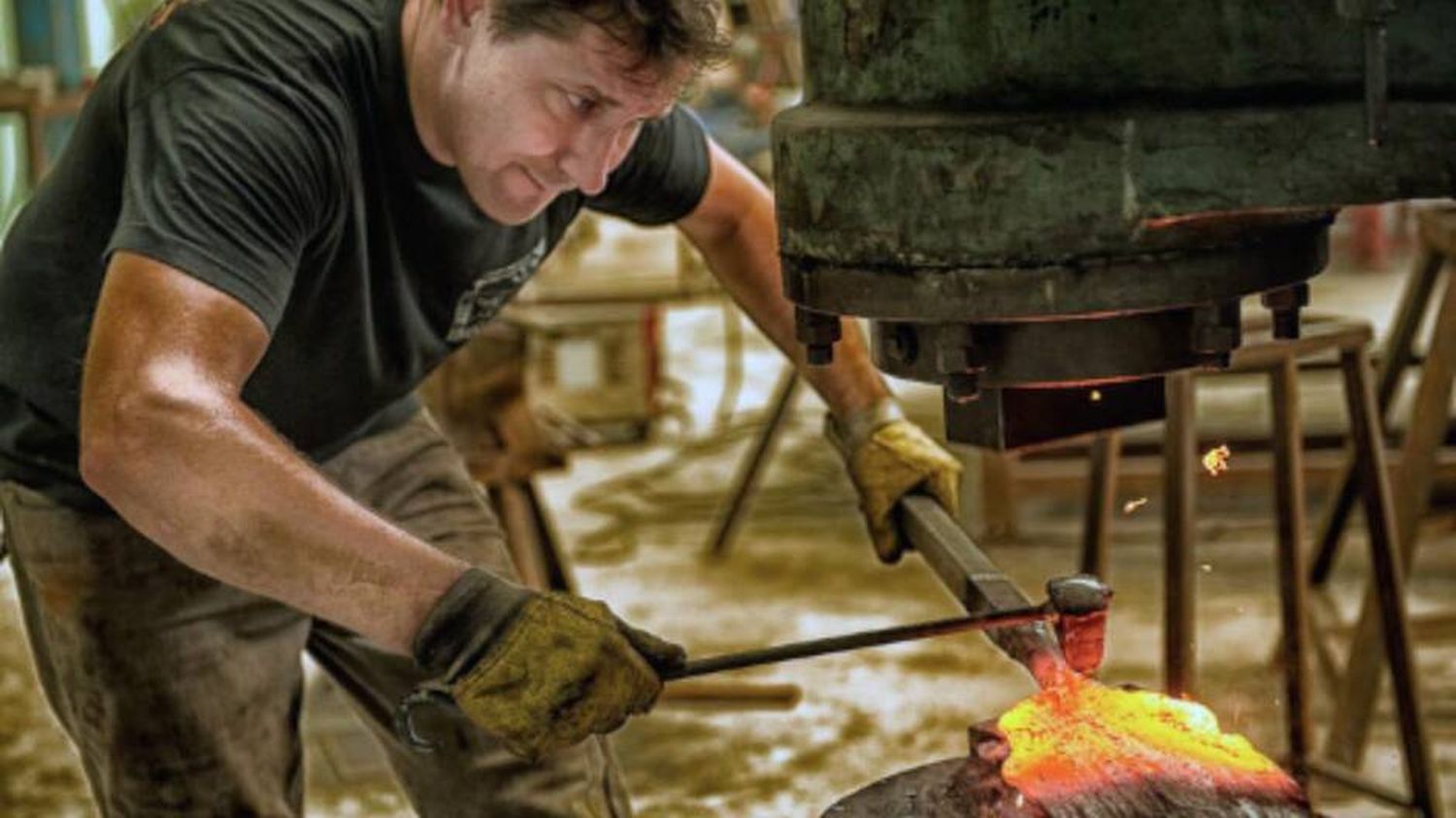Having lived there for 14 years now, the son of an ironworker and an ironworker himself, Sébastien Sicot created a “workshop-school” in artistic ironwork in Ho Chi Minh City. His know-how and his French style make him a unique artisan in Southeast Asia.
Published
Reading time: 2 min

It’s even hotter than outside, where the air is already humid. A dozen people are busy in Sébastien Sicot’s vast 700 m2 workshop, near Saigon, in the dust and an incessant din of hammer blows hitting incandescent metal.
The Frenchman has been living here, in the economic capital of Vietnam, for around ten years. His clients are rich Vietnamese industrial traders or wealthy foreigners. One of his most beautiful pieces is a life-size copy, seven meters high, of the gate of Parc Monceau, in Paris.
“They are not afraid to come with a photo of the Palace of Versailles, and to find out if I can do things for them that are somewhat identical. If you want, you from Versailles, we have more or less agreed to talk about the same thing, but they want it mainly for show, and we try to rework on the rational side of things. The difficulty is that we have to explain to them the professional approach, the technical approach,. complexity and working time.”
Sébastien Sicot discovered it to his cost at the beginning, in Vietnam, everything must be Feng shui, this Chinese art of arranging each room of a house so that the energy circulates as best as possible:
“Often, it is the mage who will give the last word on the size of a portal, a door, the direction of a staircase, the number of steps of a staircase, the height of a staircase and then the meaning of the numbers. For us Europeans, we are used to working with rather well-constructed standards. There, it’s more like magic, we are dealing with things that we have less control over.

Profile of ironworker, former companion of duty, Sébastien Sicot, from Vendéen, traveled across France for 10 years before opting for Asia.
“We’re not wired the same, I think. We don’t operate in the same way at all. And I think that when we talk about integration in France, integration means accepting the Vietnamese as they do. And then it is up to us to question ourselves a little, and to look at what we could see with a European or French eye as a fault, in fact, it is a custom, it is. a tradition is something different.”
He is also a passer. In his Saigon workshop, he trains young French apprentices and Vietnamese who work hand in hand:
“My best ironworker, until a year and a half ago, was making sushi in a Japanese restaurant. He is a boy who is extremely talented, without even speaking the same language, who really has a sense of gesture, and who has golden fingers. It’s luck to find the right people and they too, I think it’s also lucky to come across a company like ours which allows them to acquire skills and a profession.”
Married to a Vietnamese woman, father of three children, Sébastien Sicot has found his balance here in Asia. He who says that he only really discovered his father the day as a child, when he entered his ironwork workshop with him.
Find this column on the site, the app and in the international mobility magazine “Français à l’avenir.fr”
